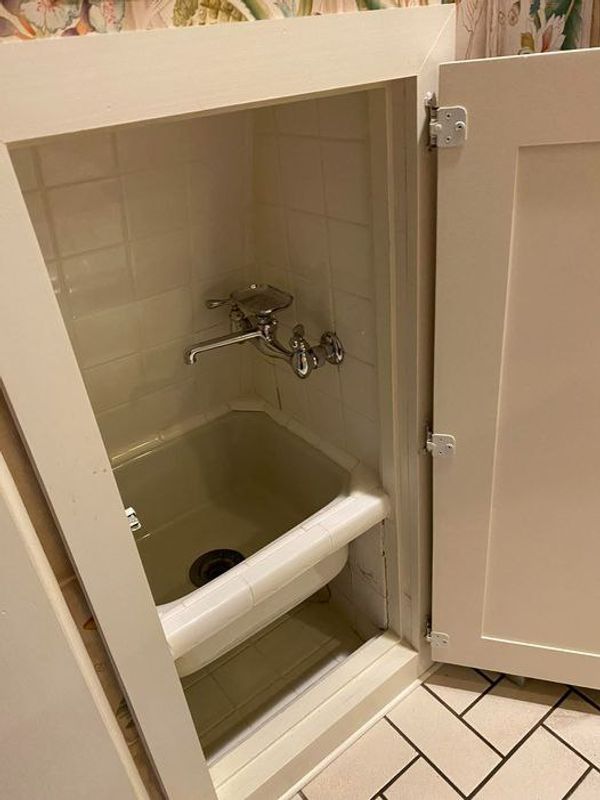In the world of home design and architecture, there are certain features that hold a special significance beyond their practicality. One such intriguing artifact is the antique sink designed specifically for mopping, set at knee-level height.
These antique sinks, often found in stately homes and manors of the past, offer a captivating glimpse into the evolution of home design and the practical aspects of household management. Crafted from materials like stone and early forms of porcelain, these sinks were thoughtfully positioned at a lower height to make it easier to fill and empty mop buckets without the need for lifting.

A Practical Innovation with Thoughtful Considerations
The knee-level mopping sink not only emphasized the importance of practicality and efficiency in household chores, but also reflected a keen attention to the comfort and well-being of the servants or staff members responsible for these tasks. These sinks were usually located in utility areas or back halls, away from the main living spaces, in line with the prevailing practice of keeping domestic work out of sight from the occupants of the house.

Beyond Practicality: The Beauty of Craftsmanship
In addition to their practical applications, antique mopping sinks are also remarkable for their craftsmanship. Many of these sinks feature elegant designs, with ornate detailing or inscriptions, transforming a purely functional item into a piece of aesthetic significance. The durable materials used in their construction ensured that these sinks have stood the test of time, cherished today as unique historical artifacts or repurposed as decorative elements in modern homes.
Insights into the Domestic Routines of the Past
The antique sink for mopping not only stands as a cultural and architectural relic, but also offers valuable insights into the domestic routines of the past. It serves as a reminder of how home design continuously evolves in response to changing dynamics in work and social status within the household. For historians, architects, and antique enthusiasts alike, these sinks are not just utilitarian relics; they are symbols of an era’s approach to functionality, design, and the demarcation of social spaces within the home.





